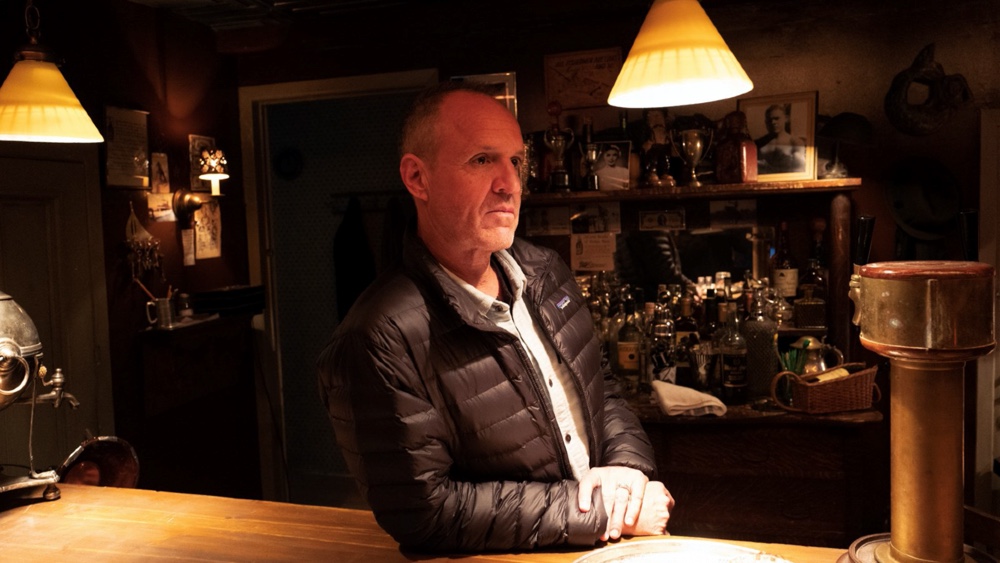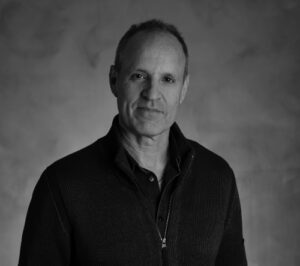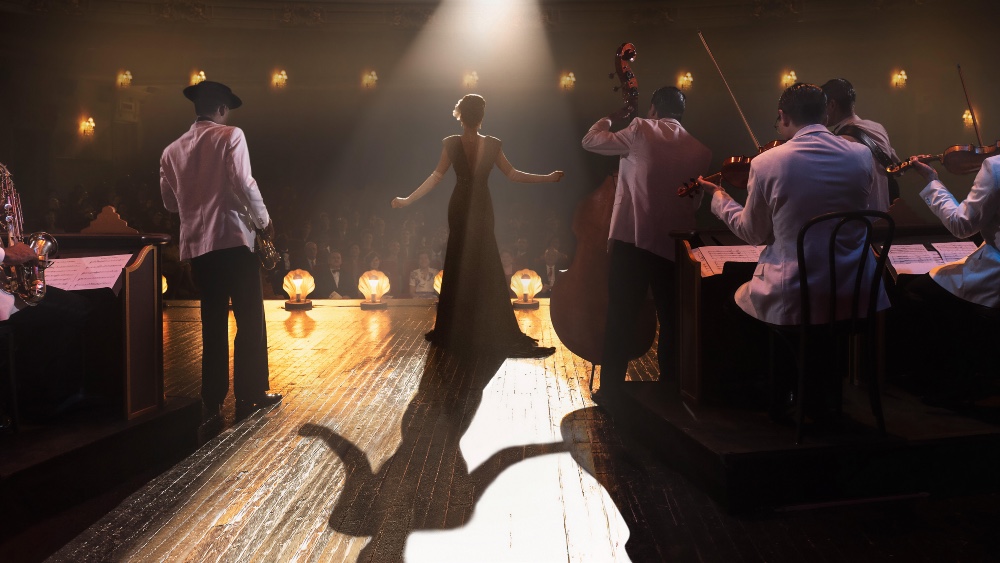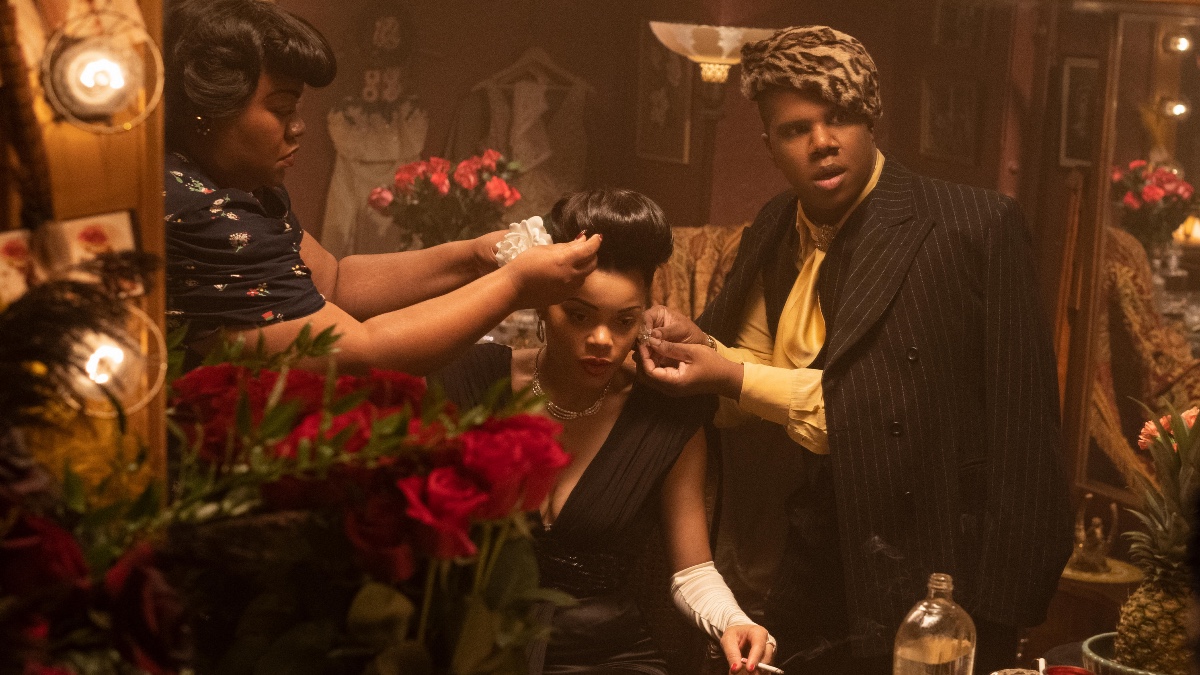
In Lee Daniels’ new film, The United States v. Billie Holiday, we catch a glimpse into the life of the iconic jazz singer during the 1930s and 40s, as she descends into drug abuse and despair while targeted by federal law enforcement officials. Starring Andra Day as Holiday, the period piece required Daniels and his crew to recreate not just a bygone time, but many nightclubs in styles that no longer exist, including most notably New York’s famous “Café Society.”
This week, Below the Line spoke to Daniel Dorrance, the Production Designer for The United States v. Billie Holiday. Dorrance had collaborated with Daniels for his 2012 film, The Paperboy, and has experience scouting for and creating sets for films as varied as The Maze Runner series and The Expendables and Die Hard sequels. This kind of period drama, with a compressed filming schedule and many different scenes in nightclubs, brothels, and other such locations, presented a unique type of challenge that Dorrance rose up to meet. The film’s sets are a perfect fit for the darker, gloomier, and more claustrophobic feeling of the story.
Read on for some of the techniques Dorrance used to locate or recreate the right places in which to film Daniels’ powerful film.

Below the Line: How did you first hear about this project, and how did this all get started?
Daniel Dorrance: My relationship with Lee Daniels, including The Paperboy and a project that never came to the screen, is how this came to me. Billie Holiday came to me about two years ago, and we were originally going to film in Atlanta but then we ended up mostly in Montreal because we felt it had more of the feeling of period, historic architecture we were going for.
I read the script and started doing some scouting work for prep, but the plug got pulled. Then Lee called me and said he was going to get back together, and he did, which was great because I had a head start looking at locations and thinking about how to design the look.
BTL: What sort of sets had you looked at when you first started?
DD: I knew about Billie Holiday but not a lot about her, so I started doing some research about what venues looked like back then and I started comparing them to which ones we could look for in the present day. I did a lot of research about what Café Society looked like. That is for me the most part of the film, learning about those older places. At that point, you don’t even have a location to go see, it’s more about the story and the elements we want to bring to life.
BTL: How did you go about ultimately recreating Café Society?
DD: That was tricky, because as it turns out there were two versions—the downtown opened first and then they had an uptown. In terms of this film I did not think it was necessary to tell the story of both, so I decided to make it a hybrid of both and merge them into one.
But there weren’t many pictures and so how this came about was that as I was looking at real life pictures [and] I thought the outside building did not match at all with the inside. That is how we realized we had to make it one, so we don’t have to explain, “We are at 1, we are at 2.” Still, there were not many images, maybe 12 at most. Some were too close to people.
So that was the most fun set to do, because we had to invent a lot. We had a picture of the one downtown that had murals, so we went for that look. We found a mural artist in Montreal and gave him the style that we say in the picture, he made them, we had them printed and mounted them on the wall, and we had a lot of leeway with what the murals would look like. We only had one wall in the pictures, it was the running point, but we could go wherever after that.
This was definitely my favorite set, because it is the only one we built from scratch. Because of this you are able to design your own space, put your own spin which is so fun to do. Trying to find the right scale for that place, where the people would sit, all of that was hard and fun. It was called “The Right Place for the Wrong People,” and that is what we wanted the space to look like.

BTL: How did you go about finding other venues we see in the film like other nightclubs and venues?
DD: We had to replicate seven different clubs. The first we look for is “Who has a club in town that has a historic look to it?” We needed the Earl Theater in Philadelphia, Carnegie Hall. Definitely neoclassical old-world architecture. We found some movie theaters in Montreal that had that look. Then we used some CGI inside to extend the size because they were not as big as Carnegie. So there we use a green screen to put the bigger size and the audience.
We had to paint most of them to match the colors we believed were the real colors, we had to dress the walls, arranging the stage and moving the lights into the right places. This was hard to do because most of these places had concerts or films showing. We were lucky to get five days in some of these places to prep, shoot, and wrap out. It was 2019, pre-COVID so they were in high use. We had to live by the schedules that those hard venues gave us.
BTL: From there, did you start designing sets and, if so, how did you do that?
DD: From there we went to work on recreating the other venues. At that point, [Cinematographer] Andrew Dunn and myself started thinking about how to merge the colors of the sets into what the costumes were, what the darker mood was. The idea was to let the walls fall away a little bit. We pitched this to Lee and he was into it. We would ask [costumer designer] Paolo [Nieddu], “Okay, what is Billie going to wear in this apartment?” and we’d say, “Okay, we will make that work.”
The idea is for the audience to disappear the walls in their mind, but the theme for sure was the darkness and trauma in her life.
BTL: Was there a particular set that stands out in your mind as not what you expected?
DD: Well, in my research, I found an image of Times Square, very old, but an artist had colorized what he thought it looked like. There was a good green, and the yellow cab popped, and I loved what it looked like, so I put Andra in front of it a few times, with a green umbrella, and I showed it to Lee and he said, “Wow, that’s it that’s the tone of the movie.” It turned out to be the inspiration in everyone’s office—we printed that as a poster for everyone.
Lee liked it so much he put a scene in the film of her walking across Times Square, with her poodle, looking for drugs. This was not scripted at all, but it felt like an image that helped sell the color palette.
BTL: Tell us about other sets you enjoyed working on?
DD: The dressing rooms. We could play a lot with those. We had one with black wallpaper, others with a totally different look. And also it was fun because we had to find space for them in other locations that were not actually these types of rooms.
Things are not always placed where you had them. Sometimes maybe you only have this actress for that week, so you have to put something where it didn’t fit.
BTL: Tell us about the most challenging set for Billie Holiday?
DD: The brothel [where Billie remembers growing up] was very tricky. She is having this flashback and she transitions Jimmy [Trevante Rhodes] from the present to her childhood. We had this great location in Montreal that actually had been an old brothel, with three stories and creaky stairs, and we end up losing that location in the last hour.
We end up putting the brothel in a church nun’s quarter, a two-story living space for nuns — at least that is what it used to be. It was a museum now. We had to create a time leap there so that when the characters walk through a doorway, they are in her childhood. We wanted that when the camera moved around from the character’s POV, the doorway was gone and you did not know where they came from. So we had the carpenters create the doorway on a little track and the moment they walk through, they move it around and spin it into another room. Tricky but fun.
BTL: Lessons learned that you will take forward?
DD: Lee, from Empire, really wanted to design, costume, DP prep meetings, almost every three days. We would sit around the room to discuss how it was going and what was next. We would go through the set pieces that were coming up and we would pitch our ideas. The set decorator would do that, costume would do that. And it was great to both coordinate in an organized way and to communicate in a way that made the moments more seamless as we went along.
The United States v. Billie Holiday is now available to stream via Hulu.






